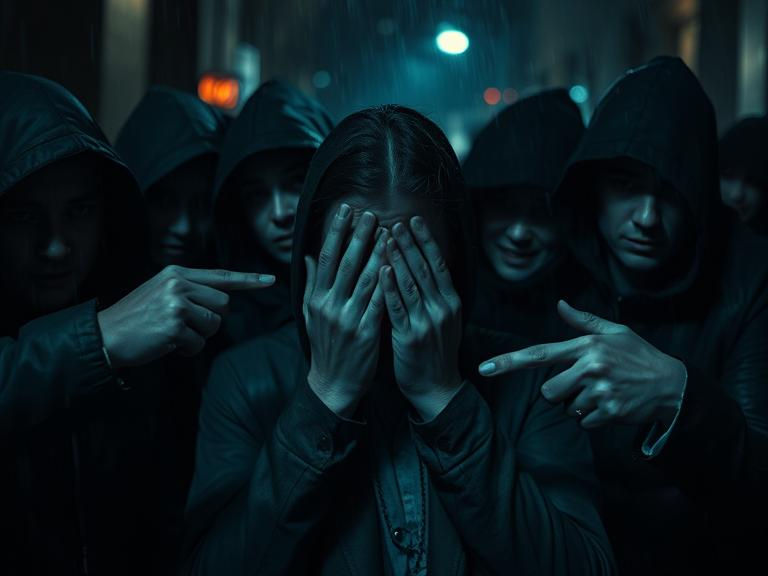Obscene Entertainment and Its Effect on Indian Society
- dhanwinderdsingh
- Mar 23
- 4 min read
Updated: Mar 25

The discourse on obscenity in entertainment has long been a controversial subject in India, where cultural diversity and varying social norms shape perceptions of morality. With the rise of digital media, concerns over explicit content influencing societal values have intensified. However, the debate raises important questions: Who defines obscenity? Should censorship be imposed based on subjective moral values? And where does the responsibility of content regulation lie?
Historical Perspective: Free Speech and Intellectual Traditions
India has historically been home to multiple schools of thought, ranging from the devotional and theistic traditions of Vaishnavism and Shaivism to the atheistic and materialistic philosophy of Charvaka. This intellectual diversity illustrates India's deep-rooted tradition of debate and acceptance of differing viewpoints, further supporting the argument against moral policing and censorship.
This perspective aligns with India's historical tradition of accepting varied viewpoints, where moral policing and censorship often stand in direct contradiction to cultural heritage.
The Changing Definition of Obscenity
India’s diverse social and economic backgrounds play a significant role in how obscenity is perceived. What may be considered vulgar or inappropriate in one household might be seen as artistic expression or normal entertainment in another.
A 2022 YouGov India survey found that 67% of urban Indians were comfortable with adult-rated content as long as it was restricted to appropriate platforms, whereas in rural areas, 78% supported stricter censorship of explicit material. This disparity highlights how socioeconomic conditions shape attitudes towards entertainment.
Furthermore, obscenity is a highly subjective concept. The Supreme Court of India, in the landmark 2014 case Aveek Sarkar v. State of West Bengal, ruled that obscenity should be judged based on contemporary community standards rather than outdated moral benchmarks.
The Responsibility of Parents vs. Content Creators
One of the most debated aspects of obscene entertainment is its impact on younger audiences. However, the onus of monitoring content consumption falls primarily on parents and guardians, not content creators. Digital platforms offer robust parental control settings, making it easier for families to filter what their children can access.
A 2023 National Commission for Protection of Child Rights (NCPCR) report revealed that 92% of parents who actively monitored their children's internet usage reported fewer concerns about exposure to inappropriate content. In contrast, households with lax monitoring often blamed external influences rather than their own lack of oversight.
Content creators, especially those behind paywalls, cater to specific audiences. Subscription-based platforms like Netflix, Amazon Prime, and Hotstar provide ratings and content warnings, allowing viewers to make informed choices. Expecting blanket censorship even for adult-rated content disregards individual responsibility and choice.
How Obscene Entertainment Affects Society
Obscene or explicit entertainment is often viewed as a moral hazard, yet research suggests that it plays an important role in fostering open dialogue on major social issues. As India is a young nation with over 65% of its population under the age of 35, content that is bold, experimental, and relatable resonates strongly with audiences (United Nations Population Fund, 2023).
A study by the Centre for Media Studies (2022) found that films and web series addressing taboo topics such as gender rights, mental health, and sexual autonomy have led to increased public discourse and awareness, particularly among younger viewers. These conversations, in turn, contribute to long-term attitudinal changes and greater social acceptance of progressive ideas.
Furthermore, contrary to concerns that explicit content fuels crime, multiple studies indicate an inverse correlation between the rise of obscene media and crime rates. A 2021 National Crime Records Bureau (NCRB) report noted that while digital consumption of adult-rated content has surged in India, reported cases of sexual crimes have remained steady or even declined in certain regions. This trend aligns with global research suggesting that access to such content can provide a safe outlet for expression, reducing the likelihood of real-world offenses (Brookings Institution, 2020).
The Pitfalls of Censorship
Censorship based on morality can have unintended consequences, including stifling creative expression and enforcing a singular cultural viewpoint. Even adult-rated films and web series often face arbitrary restrictions under the guise of protecting societal values. Such measures fail to consider that viewers have the right to choose what they consume.
A 2021 Internet Freedom Foundation report highlighted that over 60% of censored content in India targeted themes related to sexuality, gender rights, and political dissent—often disproportionately affecting marginalized communities.
Instead of outright censorship, the focus should be on better age restrictions, improved digital literacy, and parental guidance.
While arguments that violent or sexual content incites such action, one must take into consideration the example of alcohol. Every single person in our nation knows drinking is bad, yet alcohol (for varying age criteria across states) is legally sold. Why? This is done because moonshine or drinking without regulations is far more harmful than open regulated sale of alcohol. Similarly, permitting content that justifies its usage of obscenity in furthering plot or awareness is more beneficial than outright censorship. But then again, who decides whether the usage of obscenity is justified? The correct answer is - nobody. The only way to regulate content should be stricter age limits and lenient censorship with viewer warnings, only then can we as a nation talk openly about complex issues without social constraints.
References
YouGov India (2022) – Public opinion on adult-rated content
Supreme Court of India (Aveek Sarkar v. State of West Bengal, 2014) – Obscenity and contemporary standards
National Commission for Protection of Child Rights (NCPCR) (2023) – Parental monitoring and child safety
Internet Freedom Foundation (2021) – Impact of censorship on digital content
United Nations Population Fund (2023) – India’s young population statistics
Centre for Media Studies (2022) – Social impact of explicit content in media
National Crime Records Bureau (NCRB) (2021) – Crime statistics and media correlation
Brookings Institution (2020) – Research on explicit content and crime rates



Comments